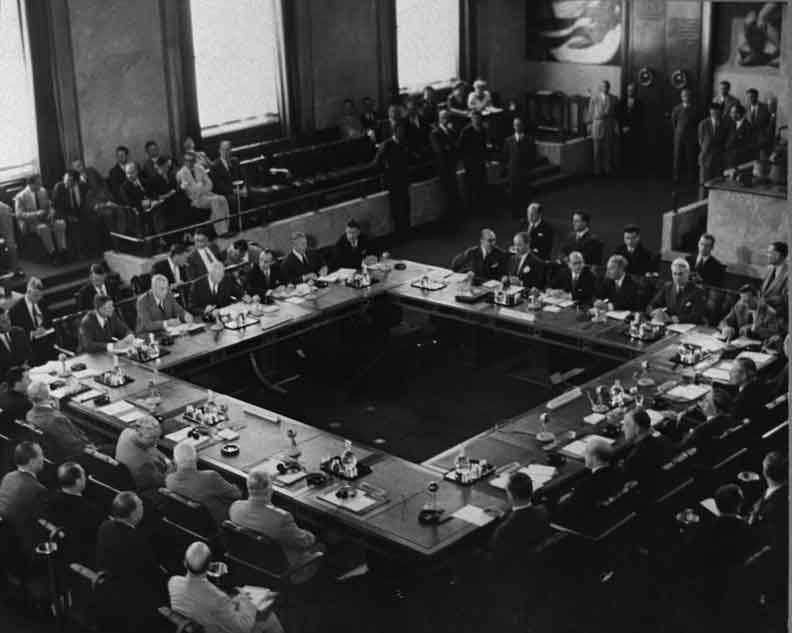Geneva Conference
The meeting of the "Big Four" President Eisenhower, Prime Minister Eden, Premier Bulganin of the Soviet Union and Prime Minister Faure of France me on July 18, 1955. The fact that a summit meeting was finally taking place after 10 years– the last one had been at Potsdam– seemed to indicate a significant relaxation of East-West tensions. However, very little of real substance occurred at the conference. The major surprise was Eisenhower's proposal for "open skies," which entailed allowing each side to send intelligence- gathering aircraft over the other's territories, virtually unhindered. The summit ended without any major agreements..
The 1955 Geneva Summit was a meeting of the leaders of the United States, the Soviet Union, France, and Great Britain, held from July 18 to July 23, 1955, in Geneva, Switzerland. The summit was a significant event in the Cold War, as it marked a rare moment of direct dialogue between the leaders of the two superpowers, and provided an opportunity for the negotiation of a range of issues that had been causing tension between the United States and the Soviet Union.
The 1955 Geneva Summit was attended by President Dwight D. Eisenhower of the United States, Prime Minister Anthony Eden of Great Britain, Premier Nikolai Bulganin of the Soviet Union, and Prime Minister Edgar Faure of France. The summit was held in the aftermath of the death of Soviet Premier Joseph Stalin in March 1953, and the subsequent rise of Nikita Khrushchev as the new leader of the Soviet Union.
One of the key issues discussed at the summit was the issue of disarmament. Both the United States and the Soviet Union had been engaged in a nuclear arms race since the end of World War II, and there were growing concerns about the possibility of nuclear war. At the summit, the leaders discussed a range of proposals aimed at reducing the number of nuclear weapons in both countries, including the establishment of a nuclear test ban treaty and the creation of a disarmament commission.
Another issue discussed at the summit was the question of Germany. At the end of World War II, Germany had been divided into four occupation zones, with the United States, Great Britain, France, and the Soviet Union each controlling one zone. The division of Germany had become a major source of tension between the United States and the Soviet Union, with both sides vying for influence in the region.
At the summit, the leaders discussed the possibility of reunifying Germany, but failed to reach an agreement. The Soviet Union insisted on a reunified Germany that was neutral and independent, while the United States and its allies favored a reunified Germany that was aligned with the West.
The summit also saw the first direct talks between the leaders of the United States and the Soviet Union since the Potsdam Conference in 1945. President Eisenhower and Premier Bulganin held several private meetings during the summit, and the two leaders engaged in frank discussions about a range of issues, including the arms race, the situation in Germany, and the possibility of improving relations between the United States and the Soviet Union.
Despite the positive atmosphere at the summit, there were limits to the progress that could be made. The United States and the Soviet Union remained deeply divided on a range of issues, and the summit failed to produce any major breakthroughs. However, the summit did provide an opportunity for the leaders of the two superpowers to engage in direct dialogue and to explore the possibilities for cooperation and compromise.
The 1955 Geneva Summit had significant implications for the Cold War. The summit marked a turning point in the relationship between the United States and the Soviet Union, as it provided an opportunity for the two sides to engage in direct dialogue and to explore the possibilities for cooperation and compromise. The summit also laid the groundwork for the later negotiations that led to the signing of the Partial Test Ban Treaty in 1963 and the Strategic Arms Limitation Talks in the 1970s.
 >
>